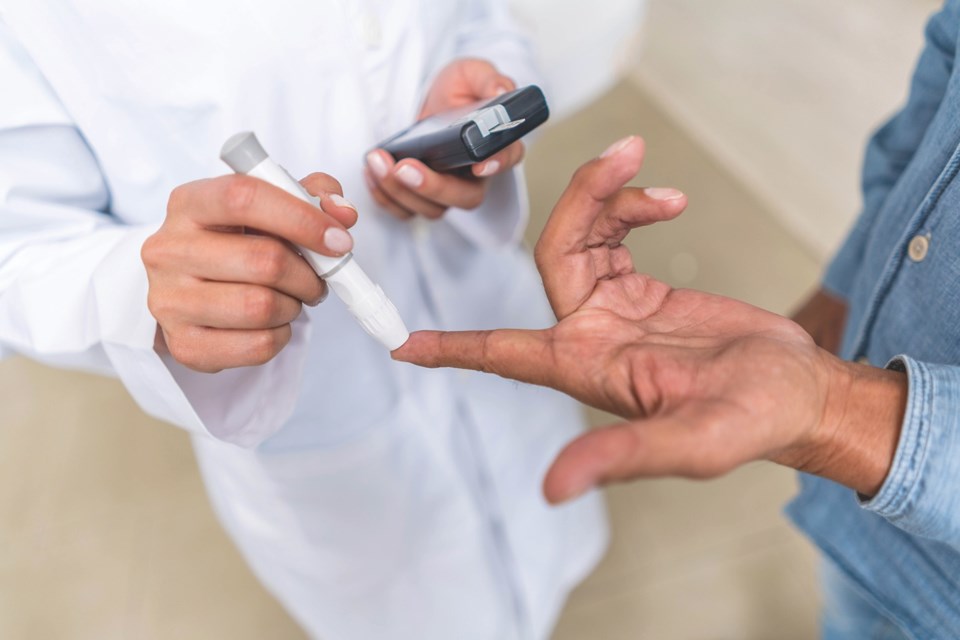Dental issues and vision problems could be early indicators of prediabetes, which impacts nearly three times more than the 37 million currently diagnosed diabetics in the U.S.
“The rate of diabetes or incidence of diabetes is increasing annually by about 2 million people per year in the United States,” according to Dr. Mike McDermott, director of the Endocrinology and Diabetes Practice at University of Colorado Hospital. “It's huge and we're increasing at a rapid rate.”
In 2019, the Centers for Disease Control and Prevention estimated 96 million U.S. adults had prediabetes.
Among the standards of care recommended by the American Diabetes Association are annual dental examinations.
“On our intake forms we ask people when is the last time you went to the dentist and when's the last time you went to the ophthalmologist because those are the two things we want people to do every year,” he said.
Diabetes occurs when the pancreas produces insufficient insulin or a person’s body fails to effectively process the hormone, according to the World Health Organization. If left untreated, diabetes can increase blood glucose (sugar) levels.
In many instances patients developing diabetes could also be suffering from tooth decay or gingivitis, McDermott explained.
“People who are beginning to develop more oral health issues, that should be a signal that among other things they should go get tested for diabetes,” he said.
Diabetes can reduce saliva production, which in addition to maintaining mouth moisture also aids in preventing tooth decay by washing away food particles, minimizing bacteria growth and related acids, according to the National Institute of Diabetes and Digestive and Kidney Diseases.
Diabetics typically have higher glucose levels in their saliva, which is “going to be more of a cultural medium for bacteria,” McDermott noted.
Plaque is formed on teeth when starches or sugars from foods and beverages interact with oral bacteria. Plaque contains acids that compromise teeth enamel, which can result in cavities and gum disease.
Inflamed gums, or gingivitis, is the first stage of periodontal gum disease. If left untreated the disease progresses from inflamed gums to eventual tooth loss, with high blood glucose levels exacerbating the condition.
“Gingivitis in particular can cause worsening diabetes controls,” he said.
Other recurring oral health issues among diabetics include dry mouth, with reduced saliva levels causing ulcers, sores and infections. Also burning mouth syndrome, resulting in a burning sensation inside the mouth, can result from unmanned blood glucose levels, according to the National Institute of Diabetes and Digestive and Kidney Diseases.
Diabetes is also the leading cause of acquired blindness in the country, McDermott said.
“They should make sure that they've had a dilated eye exam every year because diabetes affects the retina,” he explained.
In addition to monitoring dental or vision issues for tell-tale signs of diabetes, McDermott also recommends getting screened annually.
“It's a very simple test and is easily diagnosed,” he said.
In many instances Type 2 diabetes, which accounts for 95% of cases, can remain asymptomatic for years, McDermott explained.
“When people are diagnosed with diabetes we really don't know how long they've had it,” he said. “People may have had it for five or 10 years before it's diagnosed.”
Proper diet and exercise are crucial to prevent diabetes, McDermott noted.
“Obesity is sort of the common factor,” he said.
People with diets consisting of high carbohydrates or sugars are at an increased incidence of developing diabetes, McDermott said.
“It is the diet and the food choices, but overall it's calorie intake and even more importantly how much physical activity,” he said.
Physical inactivity and obesity are the major drivers of obesity, McDermott explained.
“Often 10 or 15 pounds of weight loss will reverse the diabetes,” he said.


